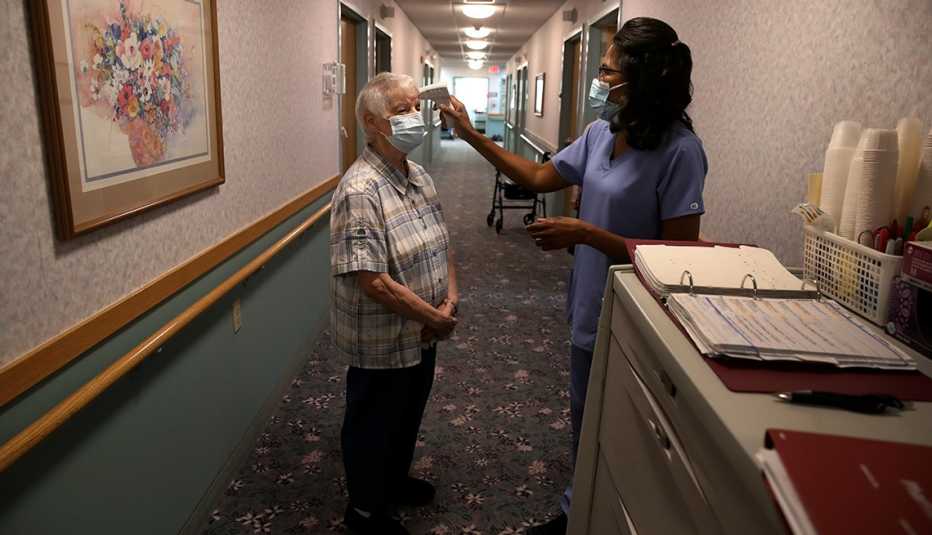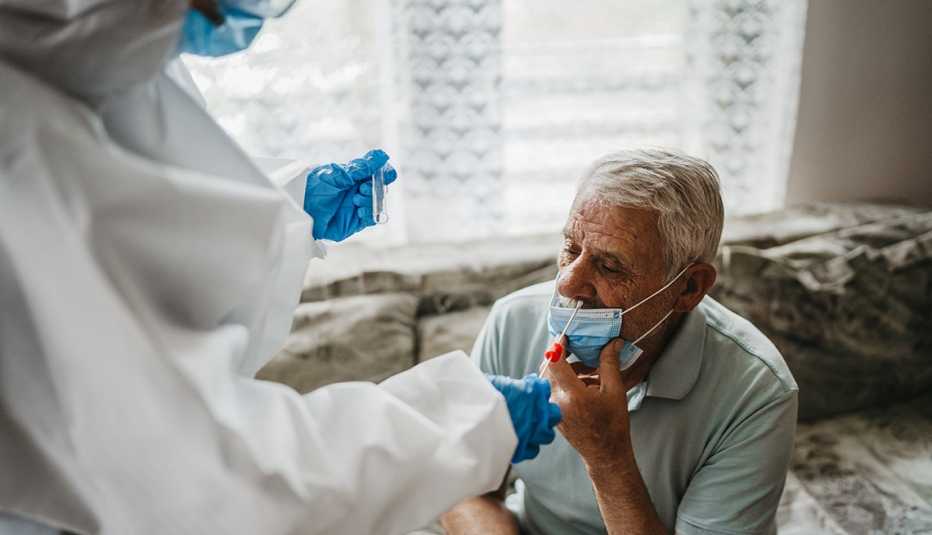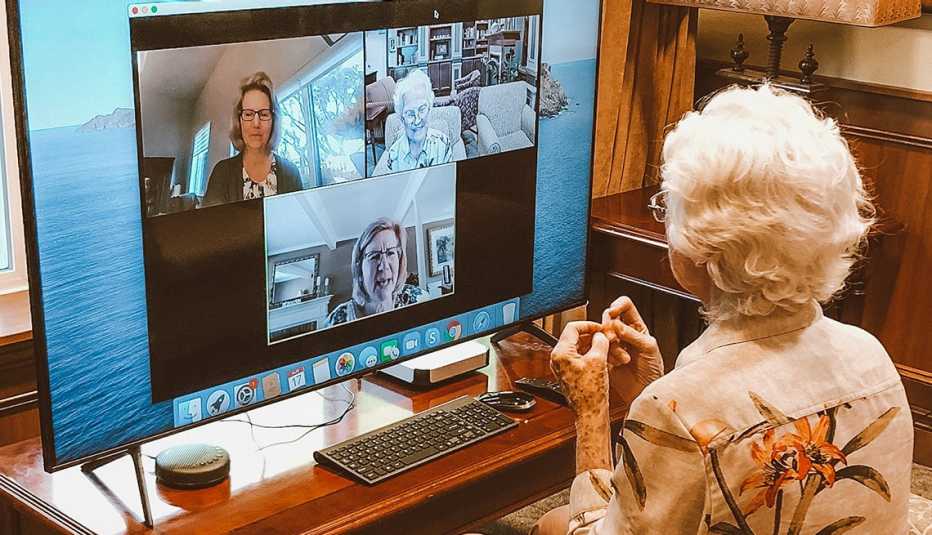Staying Fit
America's nursing homes broke records for new COVID-19 cases in November, easily eclipsing the previous highs from last spring, according to a new report from a trade group that represents U.S. long-term care providers.
The report found that more than 16,000 new weekly COVID-19 cases among nursing home residents were reported to the federal government in mid-November, representing almost a doubling of the nearly 9,000 new weekly cases reported at the end of May, when the Centers for Medicare & Medicaid Services started reporting cases in nursing homes. The case count smashes the CMS’ previous record, 9,868 cases, from late July.


AARP Membership— $12 for your first year when you sign up for Automatic Renewal
Get instant access to members-only products and hundreds of discounts, a free second membership, and a subscription to AARP the Magazine.
The report, released Tuesday by the American Health Care Association/National Center for Assisted Living (AHCA/NCAL) — which represents more than 14,000 nursing homes and assisted living communities — also reveals that the surge in resident cases is unlike any other that the CMS has reported throughout the pandemic. In just five weeks, from the week ending Oct. 11 to the week ending Nov. 15, confirmed COVID-19 cases among nursing home residents jumped from 6,740 to 16,257 — an increase of more than 140 percent.
Given that the United States’ long-term care community has already experienced more than 100,000 deaths among residents and staff throughout the pandemic — representing 40 percent of the nation's COVID-19 death toll — the findings of the new report are “absolutely outrageous,” says Bill Sweeney, AARP's senior vice president of government affairs.
"AARP has been fighting for months for people working and living in nursing homes and other long-term care facilities,” he says. “We need more focus on these facilities, but we also need real accountability for the taxpayers’ dollars that have already been given to nursing homes. We have seen at least one situation, in Kansas, where hundreds of thousands of taxpayer dollars were given to a nursing home where every single resident ended up getting COVID-19.”
Infections in the Midwest proved particularly concerning, the report shows, with the region responsible for nearly half of the new weekly coronavirus cases reported among nursing home residents in mid-November. Since mid-September, the Midwest has seen more than a 400 percent increase in new weekly COVID-19 cases among residents.
Increased spread of COVID-19 in the general population is largely to blame for the surging nursing home infections, according to the report. Using COVID-19 case counts among the general population from Johns Hopkins University, the report highlights that the new uptick in nursing home cases started as community transmission began rising around the country in mid-September.




































































